
Nowhere on earth are they building more railroad lines than in the People’s Republic of China. The most populous nation in the world is developing rapidly and with it comes a need for more and more freight and passenger rail - and the demand for higher and higher speeds. Unfortunately, these high speeds cannot be achieved on rail that is sinking and settling in various places, especially in tunnels. This slows down people and commerce and is also a concern for safety. The culprit is groundwater, soil consolidation, and in some cases poor compaction. This is the type of environment where AP Lift 475 has done some of its best work.
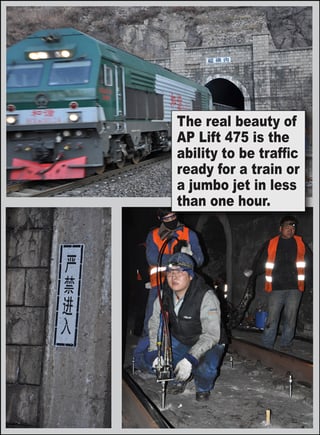 Powerful Polymer
Powerful Polymer
AP Lift 475 is a two component, hydrophobic, structural lifting polymer designed for airport, highway, and railroad applications. It can be used to stabilize structures, fill voids, and lift slabs supporting tremendous loads. The real beauty of it is the ability to be traffic ready for a train or a jumbo jet in less than one hour. A few years ago, it was put to the test in tunnels in the mountains of China.
Painless Procedure
With rails sitting on double concrete slabs (the top slab was 1 meter thick, the bottom 30 cm) a plan was developed to bring the low spots back into tolerance by injecting AP Lift 475 underneath both slabs through extra-long injection packers.
Monitoring with laser levels, the low spots in the rail were lifted back to the original grade. AP Lift 475 performed as advertised. The railroad track was raised and supported, while at the same time the ground water was displaced, literally jetting out of relief holes as it sought a place to escape.
Rapid Result
Working in 4 hour windows where the rail traffic is shut down at night, crews lifted low spots in these tunnels quickly and efficiently. At 5 AM equipment and personnel had to be clear of the tracks and 15 minutes later the trains would rumble through. Vibration monitoring by railway engineers showed a smoother ride and the people and commerce of China were allowed to move once again at a frenetic pace.



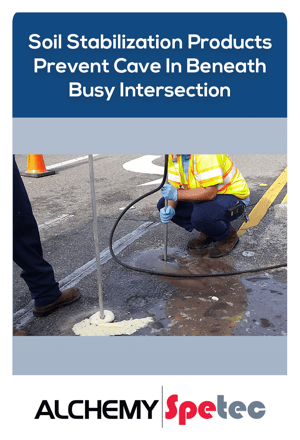 County inspectors found a depression in the road due to an underground sewer line that wasn’t sealed at a heavily trafficked roadway intersection in Orange County, Florida. Water and eroding soil were infiltrating the sewer line causing the road to slowly settle. The resulting voids around the drainage structures had the potential to grow larger, eventually resulting in a complete cave-in of the roadway. In this particular case, there was a patch of asphalt 12’ x 25’ that was settling and officials feared a cave-in would occur. A point repair was done from within the leaky pipe to stop the infiltration but they feared it was only a matter of time before the road gave way. It was going to be very difficult and inconvenient to dig up this roadway, fill the void, re-compact, and re-pave due to the high volume of traffic, the adjoining rail crossing, as well as several major utilities running through the area. Not to mention that the area would have to be completely shut down to accommodate all of the equipment required for such a repair.
County inspectors found a depression in the road due to an underground sewer line that wasn’t sealed at a heavily trafficked roadway intersection in Orange County, Florida. Water and eroding soil were infiltrating the sewer line causing the road to slowly settle. The resulting voids around the drainage structures had the potential to grow larger, eventually resulting in a complete cave-in of the roadway. In this particular case, there was a patch of asphalt 12’ x 25’ that was settling and officials feared a cave-in would occur. A point repair was done from within the leaky pipe to stop the infiltration but they feared it was only a matter of time before the road gave way. It was going to be very difficult and inconvenient to dig up this roadway, fill the void, re-compact, and re-pave due to the high volume of traffic, the adjoining rail crossing, as well as several major utilities running through the area. Not to mention that the area would have to be completely shut down to accommodate all of the equipment required for such a repair.

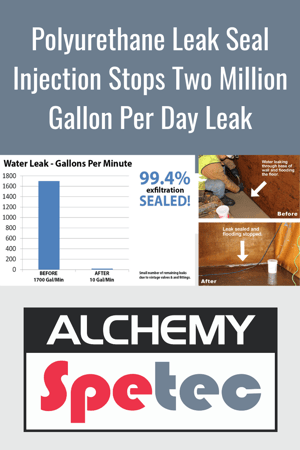 On top of a hill northeast of Chattanooga, Tennessee sits a clearwell that belongs to Eastside Utilities. Built in the 1940’s on a former Army post, this clearwell consists of twin 2-million gallon tanks used for treating surface water to turn it into drinking water. The problem was that less than half of the water coming into the clearwells was making it out the other side. Although this water treatment plant has undergone several upgrades in its 70+ year lifespan, the ground beneath it has been subject to settling and consolidation. The tanks had shifted slightly and in doing so, loosened some of the joints and the water stops contained within. Measurements indicated that the clearwells were losing 1,700 gallons per minute through various leaks; well over 2-million gallons per day. A short drive downhill from the property revealed various gullies and small creeks created by water running down the hillside.
On top of a hill northeast of Chattanooga, Tennessee sits a clearwell that belongs to Eastside Utilities. Built in the 1940’s on a former Army post, this clearwell consists of twin 2-million gallon tanks used for treating surface water to turn it into drinking water. The problem was that less than half of the water coming into the clearwells was making it out the other side. Although this water treatment plant has undergone several upgrades in its 70+ year lifespan, the ground beneath it has been subject to settling and consolidation. The tanks had shifted slightly and in doing so, loosened some of the joints and the water stops contained within. Measurements indicated that the clearwells were losing 1,700 gallons per minute through various leaks; well over 2-million gallons per day. A short drive downhill from the property revealed various gullies and small creeks created by water running down the hillside.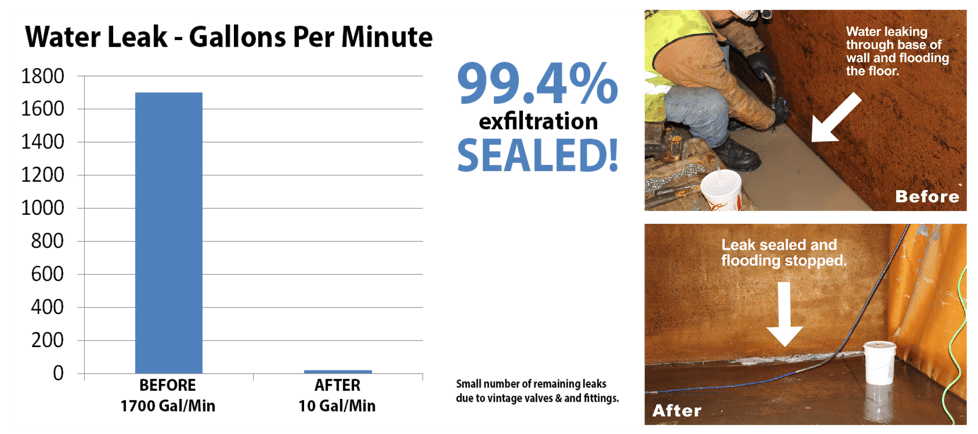


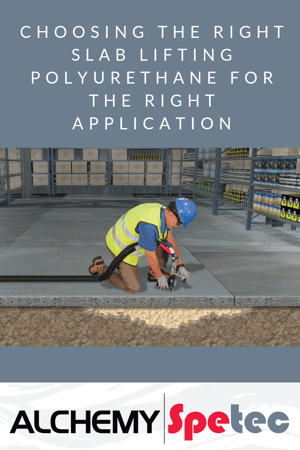 In our continuous effort to make sure you have the technical knowledge to succeed, we’ll explain how to select the appropriate
In our continuous effort to make sure you have the technical knowledge to succeed, we’ll explain how to select the appropriate 
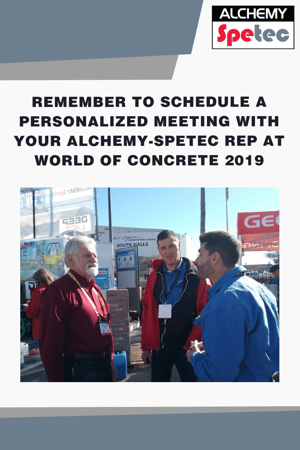 Reminder! Book your personalized meeting with an Alchemy-Spetec rep at World of Concrete!
Reminder! Book your personalized meeting with an Alchemy-Spetec rep at World of Concrete!

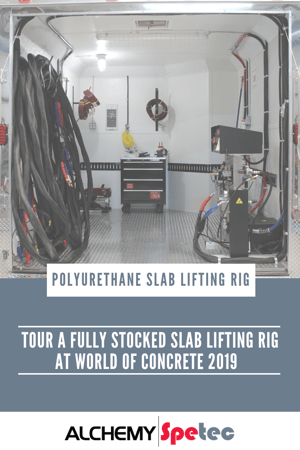 There will be a LOT to see and do at our booth this year:
There will be a LOT to see and do at our booth this year: 
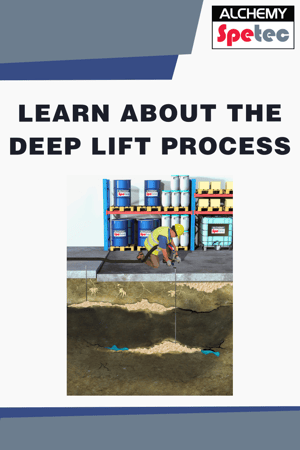


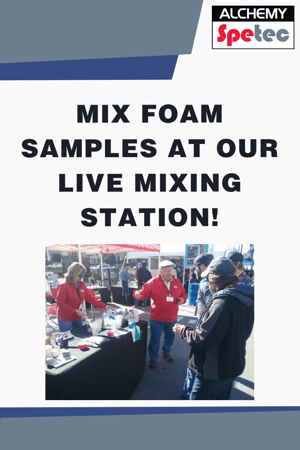 See first-hand how chemical grouts react and set up when mixed at our Live Mixing Station
See first-hand how chemical grouts react and set up when mixed at our Live Mixing Station 
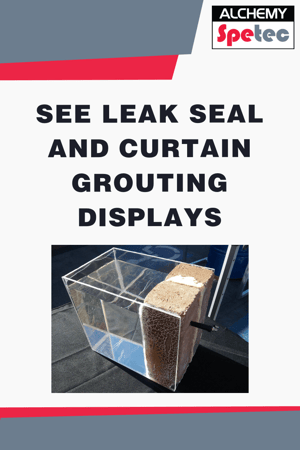 Leaking concrete structures can be permanently repaired with concrete crack injection by using a water activated flexible foam. Pressure injection of these liquid polyurethane resins forces the material into leaking cracks, joints, and other defects. After the polyurethane crack injection is complete, the polyurethane resin rapidly reacts with water to form a flexible, watertight seal.
Leaking concrete structures can be permanently repaired with concrete crack injection by using a water activated flexible foam. Pressure injection of these liquid polyurethane resins forces the material into leaking cracks, joints, and other defects. After the polyurethane crack injection is complete, the polyurethane resin rapidly reacts with water to form a flexible, watertight seal.

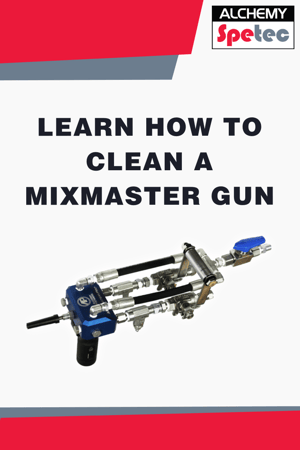 MixMaster Pro – The Production Beast!
MixMaster Pro – The Production Beast!
